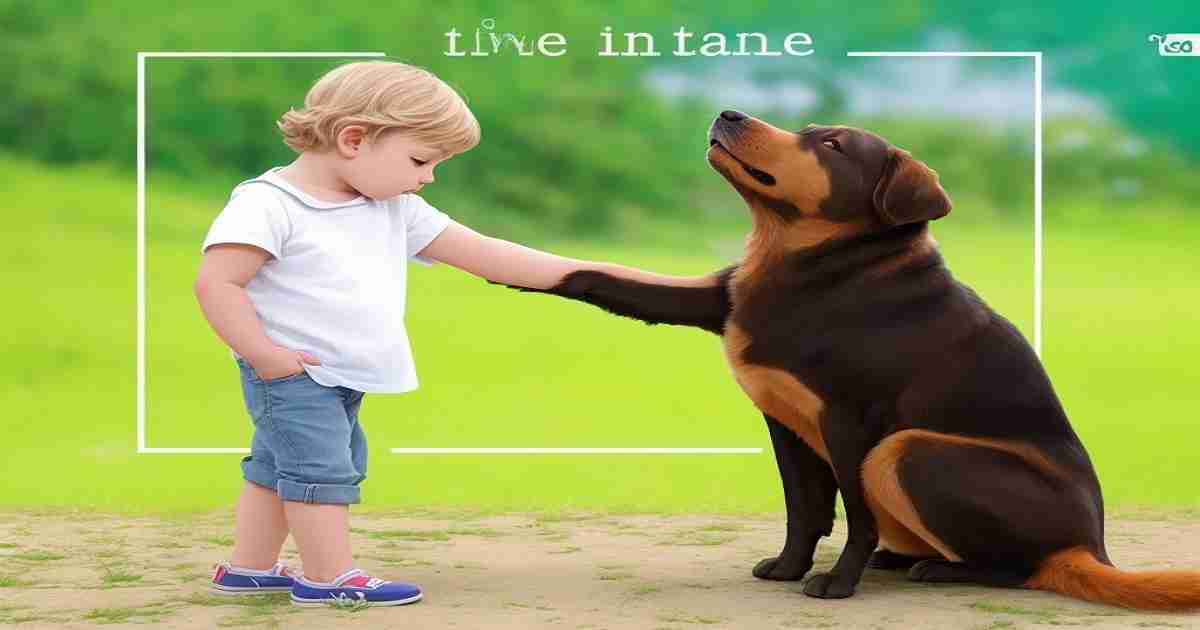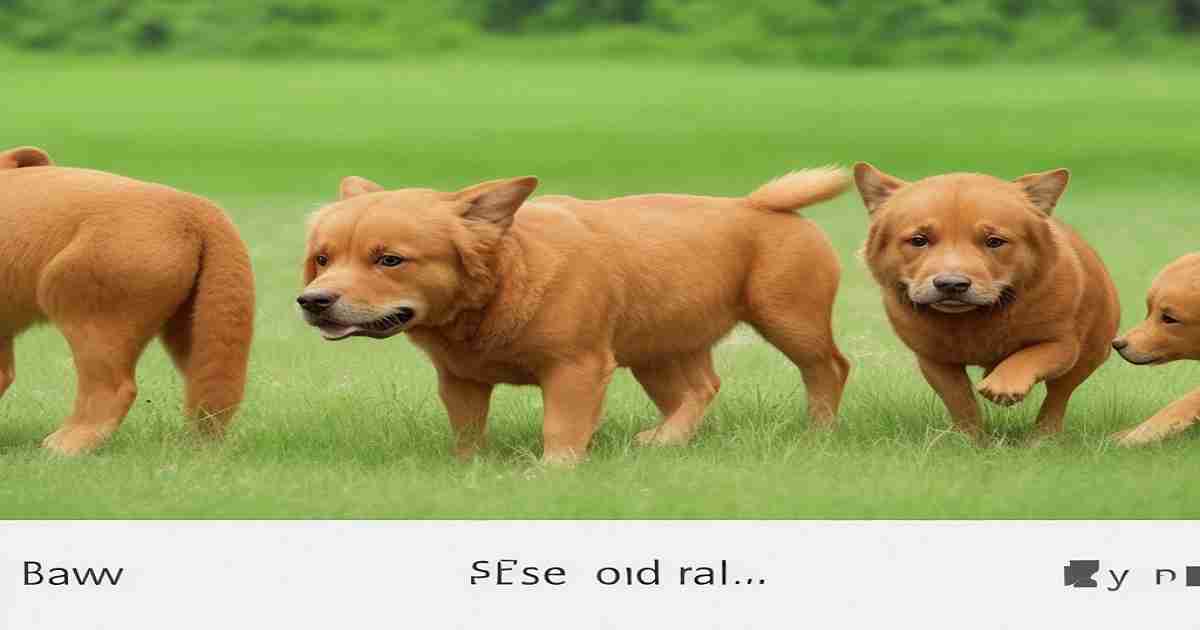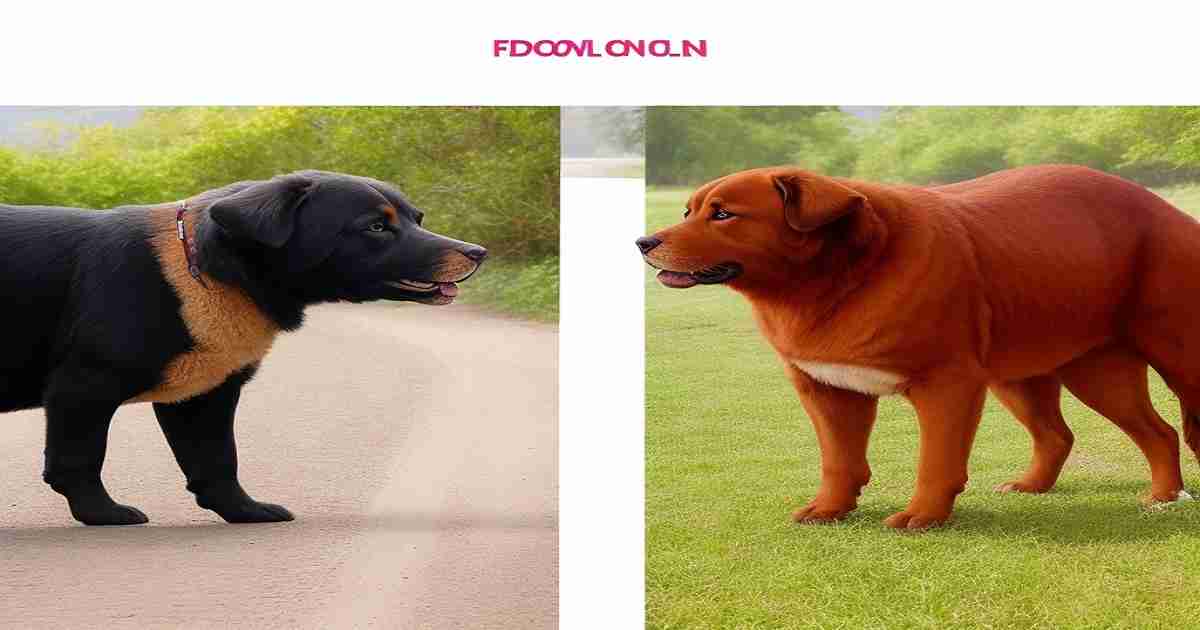Rottweilers are instantly recognizable for their large, robust build, jet-black coats, and intimidating personas.
Their appearance reflects their history as rugged working dogs bred for herding and protection.
However, look closely at Rottweilers, and you may notice a key physical difference between some individuals of this breed – the presence or absence of a tail.
Setting the Stage: The Rottweiler’s Unique Characteristics
The Rottweiler is a large-sized breed belonging to the working dogs group. Originating in Germany, they served as herd protectors, driving cattle to market and guarding them.
Their name derives from Rottweil, where they were employed to transport cattle during the Roman Empire.
Rottweilers typically have substantial bone structure, well-developed muscles, and a thick double coat.
They are renowned for their devotion, trainability, and intelligence. Rottweilers need intensive socialization and training because they have strong guarding instincts and confidence.
The Controversy: To Dock or Not to Dock?
A common practice with Rottweilers is tail docking – amputating a portion of a puppy’s tail performed at 2-5 days old.
Rottweilers’ working roles, which required them to drive cattle, gave rise to the tradition of docking their tails to prevent injury.
Today, people are critical of Rottweiler tail docking, arguing it is unnecessary and cruel. However, supporters contend that it upholds the spirit of the breed’s history and original intent.
What are your opinions on this matter? Discover the background, viewpoints, and facts behind Rottweiler tail docking by reading on.
Historical Context of Rottweiler Tail Docking
Ancient Origins: Rottweilers as Working Dogs
Butchers in ancient Roman times used Rottweilers as working dogs to herd cattle. This role continued into the Middle Ages. As rugged cattle dogs, Rottweilers had their tails routinely docked to prevent injury.
Rottweilers guarded and defended cattle from predators and thieves in addition to herding.
Their natural protective instincts and strength aided them in defence roles as well.
Tail Docking Tradition: Why and How It Began
For herding dogs like Rottweilers, thick brush and the risk of trampling their tails made tail injuries a common hazard.
Docking avoided injuries, infections, and discomfort.
The traditional dock involved tying a ligature band on the puppy’s tail at the desired length to cut off blood flow.
The portion beyond the band atrophied and fell off. By the 19th century, the procedure evolved to amputation of the tail tip under anesthesia.
Tail Docking: Pros and Cons
Pros of Tail Docking
Traditionally Linked to Working Roles
Docking originated from practical purposes for herding and cattle driving work. Removing the tail tip minimized the risk of injury and infection, especially given the lack of antibiotics before the 20th century.
Aesthetic and Breed Standard Reasons
Today, proponents view a docked tail as the proper aesthetic for a Rottweiler per the AKC standard.
It presents a streamlined, firm appearance, befitting the breed’s heritage as rugged protectors and enforcers helping move stubborn cattle.
Cons of Tail Docking
Ethical Concerns: Animal Welfare and Pain
Many criticize docking as an archaic, inhumane practice for cosmetic reasons today since most Rottweilers are companions. The procedure could result in unneeded suffering and harm to the body.
Potential Health Consequences
Despite the lack of information, some sites claim tail docking may raise the likelihood of incontinence and tail tumours in later life. Infection and poor healing are two other potential dangers.
The Modern Perspective: Rottweilers with Tails
Benefits of Keeping Tails Intact
Enhanced Communication: Tail as a Mood Indicator
A Rottweiler’s tail helps convey important mood cues. A natural, undocked tail shows if your Rottie is happy, anxious, or ready to play more clearly.
Natural Movement and Balance
The tail contributes to appropriate movement mechanics and helps balance, particularly during athletic activities like agility.
Taking Care of Aesthetic Issues
Embracing the Natural Look: Changing Perceptions
While many still favour the docked look aligned with tradition, acceptance of natural tails is growing. The Rottweiler’s distinctive tail also draws attention to its expressive communication.
Problems with Breed Standards Compliance
Concerns about meeting the AKC’s breed standard mean undocked Rottweilers still face obstacles entering conformation shows. However, they can participate in all other AKC events.
Tail Docking Practices Around the World
Legal Standpoints: Countries and Regulations
Tail docking is restricted in many European countries but remains legal in the US and Canada. For instance, Europe’s Convention for the Protection of Pet Animals limits docking to therapeutic or prophylactic purposes.
Cultural Shifts: From Tradition to Animal Welfare
Views on tail docking are changing, even in historically pro-docking countries like the US. More breeders and owners are leaving tails natural due to animal welfare concerns.
Tail Docking Procedures: What It Involves
Surgical Process: What Happens During Docking
Most Rottweiler tail docking occurs at 2-5 days old. The veterinarian amputates the puppy’s tail, typically leaving only one or two tail vertebrae. They may use a scalpel, scissors, or laser. A doctor controls bleeding with cauterization.
Recovery and Care: Post-Surgery Considerations
Proper technique can prevent complications like infection, monitoring healing is vital. The veterinarian may require bandages and anti-inflammatory medication during the recovery period.
The Role of Breed Standards
Evolution of Rottweiler Breed Standards
The AKC first recognized Rottweilers in the 1930s. Since then, their breed standard has reflected the traditional docked tail, stating it “is customarily docked to the first or second joint” but that tails of different lengths are acceptable.
Tail Docking’s Influence on Conformation
An undocked tail precludes competition in the conformation ring. However, discussions about loosening tail requirements in breed standards have arisen due to tendencies toward leaving tails natural.
Rottweiler Health and Tail Integrity
Tail Functionality: Communication and Expression
A Rottweiler’s tail conveys emotions. Lowered tails can demonstrate aggression, while upright, wagging tails reflect playfulness or excitement. Owners of undocked dogs appreciate their expressiveness.
Potential Health Consequences of Docking
According to research, tail docking may increase the incidence of urine incontinence and tail cancer. Amputation also removes the tail’s role in balance and movement.
Tales from Rottweiler Owners
Personal Experiences: Those Who Opted for Docking
Many Rottweiler owners choose to dock tails to uphold tradition and the quintessential look of the breed.
They feel it gives the dog a strong, bold appearance. Ultimately, they stand behind the docked tail as ideal for the Rottweiler.
Embracing Natural Tails: Stories of Un-docked Rottweilers
However, owners delighted by undocked Rottweilers highlight their greater expression and unaltered movement. They feel preserving natural tails is ethical while celebrating the breed’s robust temperament and form.
Frequently Asked Questions (FAQs)
- Is tail docking purely a cosmetic procedure?
Historically, tail docking prevented cattle herding injuries, but today, it primarily continues for aesthetics and tradition. Most companion Rottweilers don’t require docking for their lifestyle.
- What are the historical reasons behind tail docking Rottweilers?
Herding cattle over brushy terrain, having tails trod upon in cattle pens, and fighting predators posed tail damage risks, making docking a preventative measure.
- Is there any advantage to keeping the Rottweiler’s tail on?
The advantages are better balance and agility, more accurate expression of emotions through tail signals, and avoiding surgery.
- Does a Rottweiler’s ability to communicate with people and other canines suffer by tail docking?
Removing the tail inhibits the nuanced non-verbal communication Rottweilers rely on to relate moods and intentions through tail positioning.
- Are there any countries where tail docking is still mandatory?
Rottweiler tail docking is no longer mandatory. However, it remains a strong preference in the AKC breed standard.
- How does tail docking compliance affect dog show participation?
Only docked Rottweilers can compete in conformation at AKC shows. Tails of any length are allowed in all other show events.
7. Do Rottweilers have a higher risk of specific health issues if their tails a veterinarian docks the tails.?
Some research indicates possible links to a higher risk of incontinence and cancer, but data remains limited and contested.
- What’s the general perception of Rottweilers with tails in today’s society?
Traditionally, docked Rottweilers used to be the norm. Still, acceptance of undocked tails is growing due to changing attitudes about cosmetic procedures and natural dog health.
- How can I ensure my Rottweiler’s tail remains healthy if it’s not docked?
Please protect it from overexposure to sun, trauma, and excessive cold. Keep the area clean and dry. Exercise caution around doors/furniture to avoid injury.
- Are there any behavioural differences between Rottweilers with tails and those without?
Aside from subtle variations in communication style, no significant temperament differences have been shown between docked and natural-tailed Rottweilers.
Conclusion
Weighing the Options: Making an Informed Decision
The choice between a docked or natural Rottweiler tail remains with the breeder or owner. Still, it should account for ethical factors, lifestyle needs, and legal requirements. There are reasons both for and against upholding the docking tradition.
Rottweiler Individuality: Celebrating Diversity
Beyond the show ring, Rottweilers are versatile enough to work as service dogs, medical detectors, and more. Respecting people as valued companions, whether docked or undocked, is essential to upholding their spirit.









1 thought on “Top 10 Eye-Opening Facts About Rottweiler Tail With vs Without”